Purpose of burning
Prescribed burning is an attempt to replicate the natural phenomenon of landscape-scale fire that has occurred for as long as there has been terrestrial vegetation. There is fossilized charcoal (of which the only known source is the burning of wood) dated around 300 million years old, long before the first conifers, and much less the flowering plant trees that dominate our wooded lands today, even existed. Charcoal and other remnants (ash) of past fires can be found throughout the fossil record, in glacial ice layers and in the layered muck at the bottom of lakes.
The recent history of fire in Missouri has been reconstructed from a variety of sources. These range from the anecdotes and diaries of native peoples and early settlers from Europe to the scientific documentation of burn-scar patterns of living old-growth trees by Dr. Richard Guyette of the University of Missouri. Many questions remain about details of this history, but it is undisputed that fire was an important influence in determining the characteristics of the vegetation of this region. Only in the last century did fragmentation of the natural landscape and wild land fire suppression became prevalent.
Paleoecologists have shown that prairies and oak savannas occurred in North America before the arrival of humans 15- or 20- thousand years ago. But, these ecosystems increased greatly in coverage and geographic extent after humans arrived and began using fire to manage vegetation characteristics in ways that favored the abundance of harvestable plant and animal products.
Prescribed burning has gained wide acceptance among natural area managers across the Midwest, though there is a lot of discussion going on about how best to apply its use and still conserve the full diversity of life. This is because some native plants and many native animals are notably fire-sensitive. How can these be conserved while favoring the species that benefit from fire? While the beneficial effects of fire on certain plant communities are generally accepted, there is also much concern about the loss of species in the so-called “detritus food chain”, i.e, those that live in leaf litter and dead stems and wood that is destroyed by fire. At SNR, the current approach is twofold: a) never burn more than half of all the area we have in fire management during a burn-year and b) let areas within burn units that do not burn in the first pass of the fire remain unburned to provide natural refuges within the burn unit for the sensitive species.
The work of participants in a prescribed burn is quite different from the brush pile burning. There is no lugging of branches and hunks of wood to a raging bonfire. Rather, the work consists primarily of stringing out along and monitoring the edge of the burn area to make sure that the fire does not escape it’s predetermined boundaries. If there are escapes, you must quickly communicate this to the nearest staff person or take immediate action to suppress the escaped flames while calling for help. (The work of prescribed burning has been described as 95% boredom and 5% sheer panic. I would adjust this to contain a significant percentage of smoke inhalation!)
Interested in participating? Become a volunteer!
As described above, abundant historical, anthropological, and ecological data indicate the frequency of fire over the eons. Fire suppression has created a major need for cutting some cedar trees. Initially, all the cedar removal was carried out by SNR staff and volunteeers, but since 2004, SNR has incorporated commercial logging into the glade and woodland restoration program. SNR receives some payment for the harvested lumber and cedar mulch that are extracted, but the profit we hope to gain from this work is in the number and abundance of species that thrive in our natural preserve. The work is closely supervised by SNR staff, with every attempt made to keep ecological disturbance to a minimum, and the logging company uses equipment that will have a minimal impact on the soil and surrounding trees while Eastern red cedar is selectively removed.
Woodland burning
Fire in the woods does kill some smaller trees, and some species not naturally a component of oak-hickory woodland. In a low intensity woodland burn of the sort conducted at SNR, most larger and even some sapling trees survive the fire. The long-term effect of repeated burning of the woods will be a more open woodland, which is a goal of our upland forest restoration. Open woodlands interspersed with grass and wildflowers were the typical vegetation reported on the ridges and upper slopes of this region when first seen by naturalists in the early 1800s. Wide spacing is the healthiest condition for an oak-hickory woodland, Missouri's prime wildlife habitat, as these trees grow best in the better lighting conditions and produce more acorns or nuts (vital wildlife food). A rich array of grasses and wildflowers grows in open woodlands and oak savanna. These plants in turn provide food, nest materials, and other necessities to many large and small animal species which cannot survive in the shadier forest.
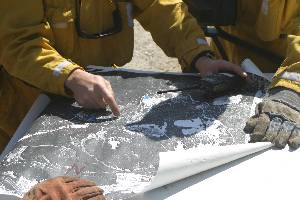
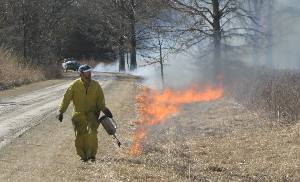
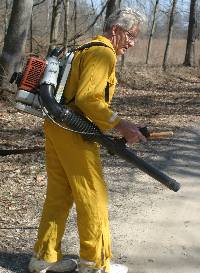
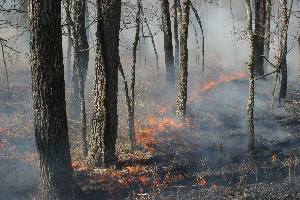
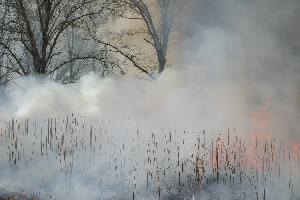
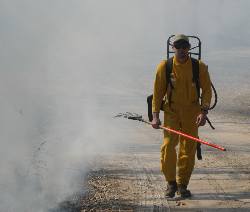
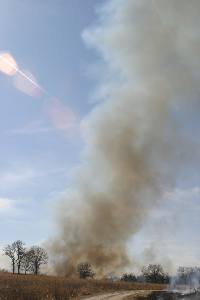
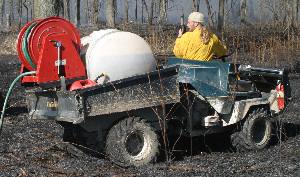
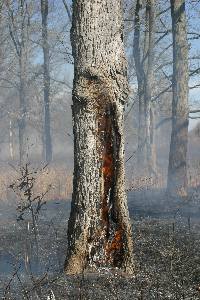 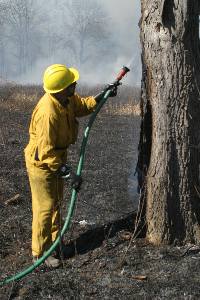
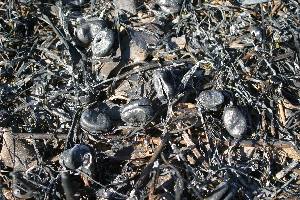
|